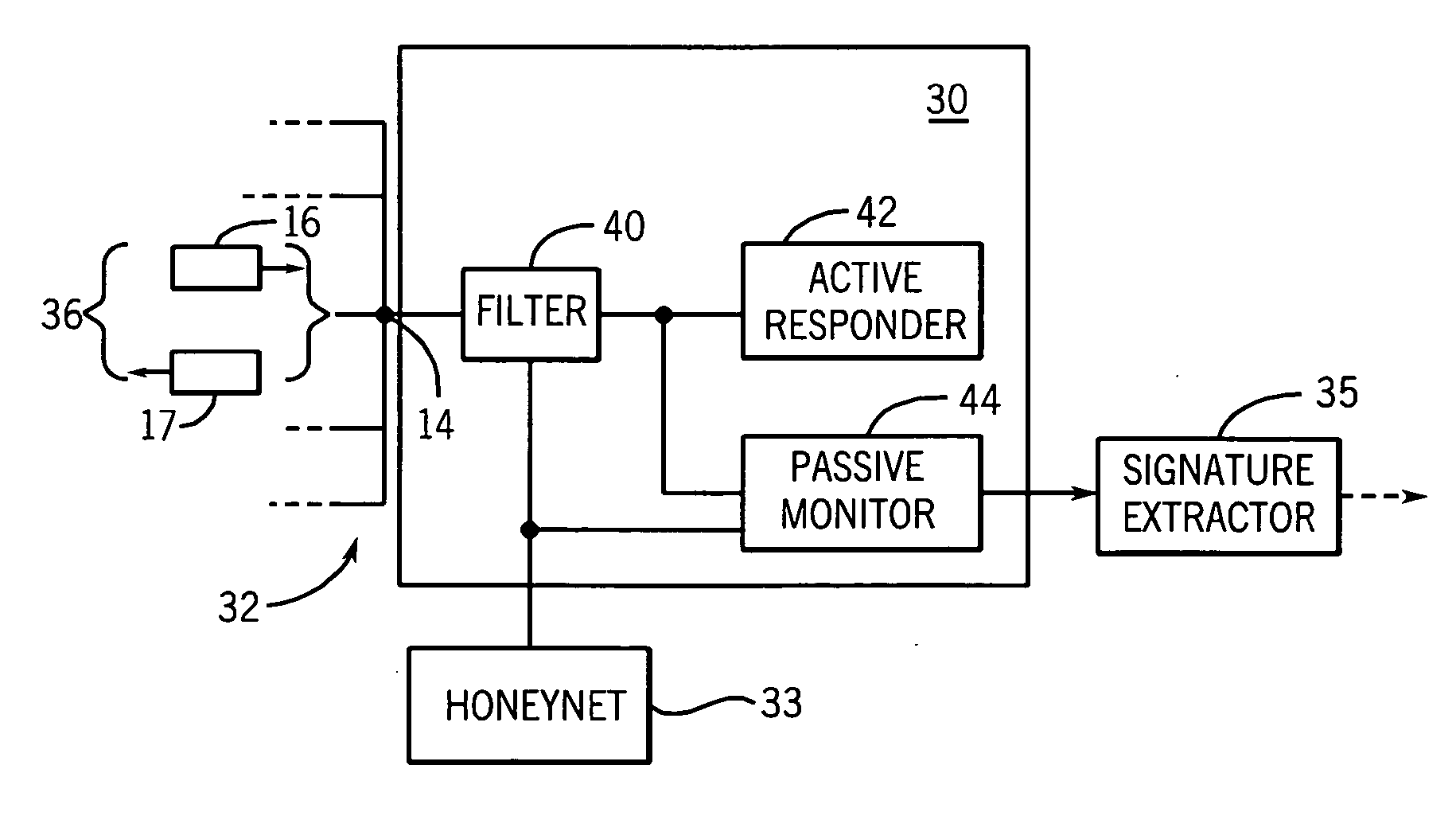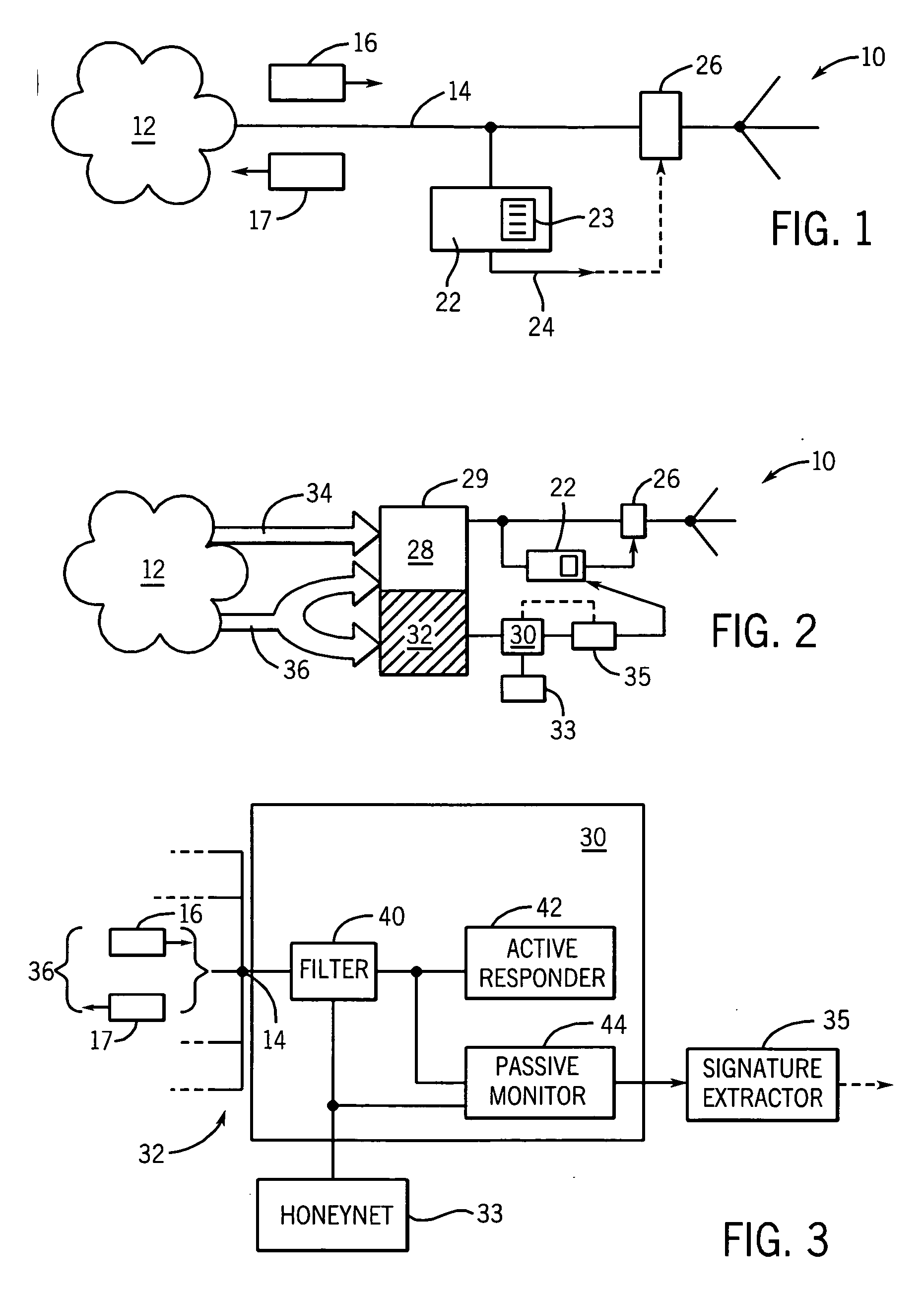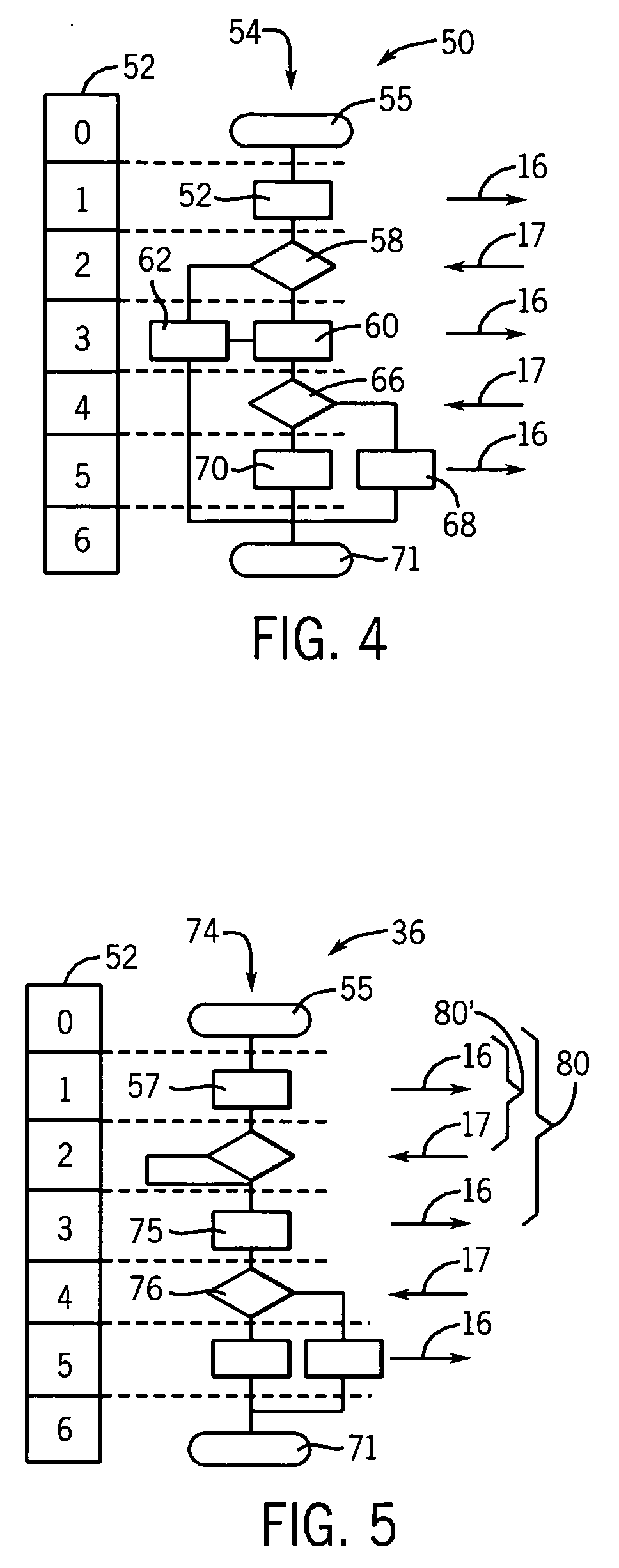Scalable monitor of malicious network traffic
a network traffic and monitor technology, applied in the field of computer network security, can solve the problems of increasing the number of malicious data, disrupting the network, and consuming network bandwidth, and achieve the effect of increasing the variety of malicious data
- Summary
- Abstract
- Description
- Claims
- Application Information
AI Technical Summary
Benefits of technology
Problems solved by technology
Method used
Image
Examples
Embodiment Construction
[0045] Referring now to FIG. 2, the network 10 may communicate with the external network 12 at multiple addresses in address space 29, for example, a class A or B network having sixteen million and sixty-five thousand addresses, respectively. The address space 29 includes “bright space” addresses 28 used by standard network computers and dark space addresses 32 currently unused by standard network computers.
[0046] The bright space addresses 28 will receive generally both legitimate traffic 34 and malicious traffic 36 while the dark space addresses 32 will receive predominantly malicious traffic 36.
[0047] The network monitor 30 of the present invention may be connected to multiple dark space addresses 32. As will be described below, the network monitor 30 presents a facade to the network 12 having the appearance of a standard interface to multiple, functioning computers.
[0048] The network monitor 30 may communicate with a standard honeynet 33 comprised of multiple standard compute...
PUM
 Login to View More
Login to View More Abstract
Description
Claims
Application Information
 Login to View More
Login to View More - R&D
- Intellectual Property
- Life Sciences
- Materials
- Tech Scout
- Unparalleled Data Quality
- Higher Quality Content
- 60% Fewer Hallucinations
Browse by: Latest US Patents, China's latest patents, Technical Efficacy Thesaurus, Application Domain, Technology Topic, Popular Technical Reports.
© 2025 PatSnap. All rights reserved.Legal|Privacy policy|Modern Slavery Act Transparency Statement|Sitemap|About US| Contact US: help@patsnap.com



